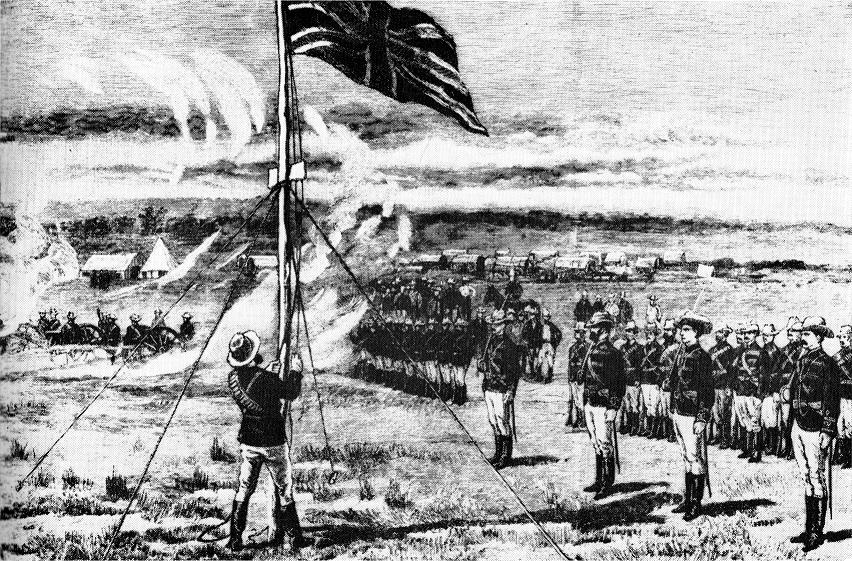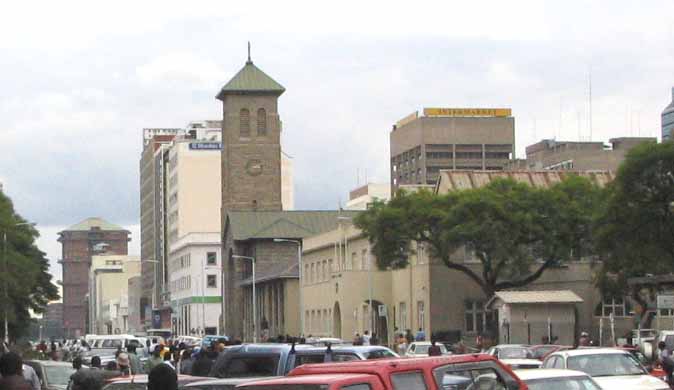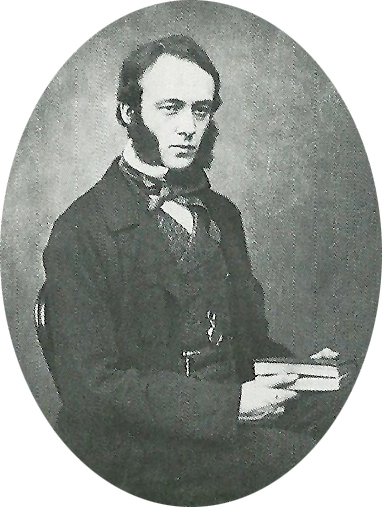|
Harare
Harare (; formerly Salisbury ) is the Capital city, capital and most populous city of Zimbabwe. The city proper has an area of 940 km2 (371 mi2) and a population of 2.12 million in the 2012 census and an estimated 3.12 million in its metropolitan area in 2019. Situated in north-eastern Zimbabwe in the country's Mashonaland region, Harare is a metropolitan Harare Province, province, which also incorporates the municipalities of Chitungwiza and Epworth, Zimbabwe, Epworth. The city sits on a plateau at an elevation of above sea level and its climate falls into the subtropical highland category. The city was founded in 1890 by the Pioneer Column, a small military force of the British South Africa Company, and named Fort Salisbury after the UK Prime Minister Robert Gascoyne-Cecil, 3rd Marquess of Salisbury, Lord Salisbury. Company Company rule in Rhodesia, administrators demarcated the city and ran it until Southern Rhodesia achieved responsible government in 1923. Salisb ... [...More Info...] [...Related Items...] OR: [Wikipedia] [Google] [Baidu] |
Harare Province
Harare Metropolitan Province () is a province in northeastern Zimbabwe. It comprises Harare, the country's capital and most populous city, and two other municipalities . Originally part of Mashonaland Province, in 1983 the province was divided into three large provinces, Mashonaland Central, Mashonaland East, and Mashonaland West, while the city of Harare became its own metropolitan province, along with two nearby cities. Harare Province is divided into four districts. Oliver Chidawu is the current Minister of State for Provincial Affairs, Harare Metropolitan Province, since March 2019. provincial governor. Harare Province has an area of , equal to 0.22% of the total area of Zimbabwe. It is the second-smallest in area of the country's provinces, after the city-province of Bulawayo. As of the 2022 census, the province has a population of 2,427,209, [...More Info...] [...Related Items...] OR: [Wikipedia] [Google] [Baidu] |
Zimbabwe
Zimbabwe (), officially the Republic of Zimbabwe, is a landlocked country located in Southeast Africa, between the Zambezi and Limpopo Rivers, bordered by South Africa to the south, Botswana to the south-west, Zambia to the north, and Mozambique to the east. The capital and largest city is Harare. The second largest city is Bulawayo. A country of roughly 15 million people, Zimbabwe has 16 official languages, with English, Shona language, Shona, and Northern Ndebele language, Ndebele the most common. Beginning in the 9th century, during its late Iron Age, the Bantu peoples, Bantu people (who would become the ethnic Shona people, Shona) built the city-state of Great Zimbabwe which became one of the major African trade centres by the 11th century, controlling the gold, ivory and copper trades with the Swahili coast, which were connected to Arab and Indian states. By the mid 15th century, the city-state had been abandoned. From there, the Kingdom of Zimbabwe was established, fol ... [...More Info...] [...Related Items...] OR: [Wikipedia] [Google] [Baidu] |
Mayor Of Harare
This is a list of mayors of Harare (previously Salisbury until 1982). Emmanual Chiroto was deputy mayor throughout He never became mayor. Bernard Manyenyeni Mayor of Harare 2013 to 2018 Sekesai Makwavara was acting mayor then chairman of a commission which ran Harare but never as mayor List of mayors Living former mayors See also * Timeline of Harare Notes and references Notes References {{DEFAULTSORT:Harare mayors Mayors Mayors of Harare In many countries, a mayor is the highest-ranking official in a municipal government such as that of a city or a town. Worldwide, there is a wide variance in local laws and customs regarding the powers and responsibilities of a mayor as well as ... Lists of mayors ... [...More Info...] [...Related Items...] OR: [Wikipedia] [Google] [Baidu] |
Epworth, Zimbabwe
Epworth is a dormitory town in south-eastern Harare Province, Zimbabwe. Its population exploded in the late 1970s and 1980s as an informal settlement. Background Epworth is located about twelve kilometres from the Harare city centre. It is a high-density dormitory town administered by the Epworth Local Board. It is bisected by a stream into two parts. The Balancing Rocks found in the northern approaches of the town are famous, and are featured on all bank notes issued by the Reserve Bank of Zimbabwe. History Epworth Mission was established by the Rev. Shimmin as a Methodist Mission Station more than a century ago, in 1890. Epworth then and to this day is divided into 7 wards. A large influx of people occurred during the late 1970s and early 1980s with the population being 20,000 in 1980 and 35,000 in 1987. The Methodist Church could not control the influx of people, and therefore transferred ownership of the farm to the Ministry of Local Government in 1983. By 2002 the ... [...More Info...] [...Related Items...] OR: [Wikipedia] [Google] [Baidu] |
Rhodesia
Rhodesia (, ), officially from 1970 the Republic of Rhodesia, was an unrecognised state in Southern Africa from 1965 to 1979, equivalent in territory to modern Zimbabwe. Rhodesia was the ''de facto'' Succession of states, successor state to the Crown colony, British colony of Southern Rhodesia, which had been Self-governing colony, self-governing since achieving responsible government in 1923. A Landlocked country, landlocked nation, Rhodesia was bordered by South Africa to the south, Bechuanaland Protectorate, Bechuanaland (later Botswana) to the southwest, Zambia (formerly Northern Rhodesia) to the northwest, and Mozambique (Portuguese Mozambique, a Portuguese province until 1975) to the east. From 1965 to 1979, Rhodesia was one of two independent states on the African continent governed by a White people in Zimbabwe, white minority of European descent and culture, the other being South Africa. In the late 19th century, the territory north of the South African Republic, Trans ... [...More Info...] [...Related Items...] OR: [Wikipedia] [Google] [Baidu] |
National Heroes Acre (Zimbabwe)
National Heroes Acre or simply Heroes Acre is a burial ground and national monument in Harare, Zimbabwe. The site is situated on a ridge seven kilometres from Harare, towards Norton. Its stated purpose is to commemorate Patriotic Front guerrillas killed during the Rhodesian Bush War, and contemporary Zimbabweans whose dedication or commitment to their country justify their interment at the shrine. Persons buried here are considered heroes by the incumbent Zimbabwe African National Union – Patriotic Front regime, which has administered the country since independence at 1980. Indeed, most of the recipients of the 'hero status' were known to be Zanu-PF sympathisers. The actual monument itself is modeled after two AK-47s lying back-to-back; the graves are meant to resemble their magazines. The monument is an early example of work of the North Korean firm Mansudae Overseas Projects. It closely mirrors the design of the Revolutionary Martyrs' Cemetery in Taesong-guyŏk, just outs ... [...More Info...] [...Related Items...] OR: [Wikipedia] [Google] [Baidu] |
Cathedral Of St Mary And All Saints, Harare
The Cathedral of St Mary and All Saints, Harare is an Anglican cathedral in Zimbabwe. The cathedral, located at the intersection of Nelson Mandela Avenue and Sam Nujoma Street in Harare, was begun in 1913 to plans by British architect Herbert Baker; he also designed the cathedrals of Cape Town and Johannesburg. History Construction began under Frederic Beaven, bishop of Mashonaland, and the sanctuary and choir were completed in 1914. The sandstone structure was only finished in 1961. The cathedral features a bell tower with 10 bells which were cast in London. There are four chapels, dedicated to St George, St Mary, St Cecelia and the martyr Bernard Mizeki. In 2012 a special service marked the return of the building to the Church of the Province of Central Africa after victory in a long-running legal battle with excommunicated former bishop Nolbert Kunonga, who had broken away from the CPCA in 2007 to form his own church. Kunonga and his supporters seized cars, churches, orp ... [...More Info...] [...Related Items...] OR: [Wikipedia] [Google] [Baidu] |
Provinces Of Zimbabwe
Provinces are constituent political entities of Zimbabwe. Zimbabwe currently has ten provinces, two of which are cities with provincial status. Zimbabwe is a unitary state, and its provinces exercise only the powers that the central government chooses to delegate. Provinces are divided into districts, which are divided into wards. The Constitution of Zimbabwe delineates provincial governance and powers. After constitutional amendments in 1988, provinces were administered by a governor directly appointed by the President of Zimbabwe. Since the 2013 constitutional changes, there are technically no longer provincial governors, though in practice they remain in place as Ministers of State for Provincial Affairs. The 2013 Constitution also calls for the devolution of governmental powers and responsibilities where appropriate, though Zimbabwean opposition parties argue that the central government has yet to comply. With the establishment of Company rule in Rhodesia in the 1890s, the ... [...More Info...] [...Related Items...] OR: [Wikipedia] [Google] [Baidu] |
Parliament Of Zimbabwe
The Parliament of Zimbabwe is the bicameral legislature of Zimbabwe composed of the Senate and the National Assembly. The Senate is the upper house, and consists of 80 members, 60 of whom are elected by proportional representation from ten six-member constituencies corresponding to the country's provinces. Of the remaining 20 seats, 18 are reserved for chiefs, and two for people with disabilities. The National Assembly is the lower house, and consists of 270 members. Of these, 210 are elected from single-member constituencies. The remaining 60 seats are reserved for women, and are elected by proportional representation from ten six-member constituencies corresponding to the country's provinces. Formerly based at Parliament House, Harare, the parliament will move to the New Zimbabwe Parliament Building in 2022. The new building has 650 seats, which will allow the parliament to expand. History Historically, the first legislature in what is now Zimbabwe was the Southern Rhod ... [...More Info...] [...Related Items...] OR: [Wikipedia] [Google] [Baidu] |
Chitungwiza
Chitungwiza is an urban centre and town of Harare Province in Zimbabwe. History As of the 2022 census, Chitungwiza had a population of 371,244. There are two main highways which connect the city to Harare namely Seke road and Chitungwiza road. The Chitungwiza Aquatic Complex, built in 1995 for the All Africa Games, is no longer functional, and serves as a music and church venue. Informal settlements Following the civil war, people moved to urban areas. Chitungwiza grew rapidly and the squatted area of Chirambahuyo alone had a population of 30,000 in 1979. Chirambahuyo was demolished by the authorities in 1982 and the inhabitants squatted elsewhere in the city in areas such as Mayambara. Areas in Chitungwiza were destroyed by Operation Murambatsvina in 2005. By the mid-2010s, the number of people squatting in informal settlements was growing. In 2020, the local authorities abandoned their plans to demolish squatter homes in Nyatsime, Seke, St Mary’s and Zengeza ... [...More Info...] [...Related Items...] OR: [Wikipedia] [Google] [Baidu] |
Company Rule In Rhodesia
The British South Africa Company's administration of what became Rhodesia was chartered in 1889 by Queen Victoria of the United Kingdom, and began with the Pioneer Column's march north-east to Mashonaland in 1890. Empowered by its charter to acquire, govern and develop the area north of the Transvaal in southern Africa, the Company, headed by Cecil Rhodes, raised its own armed forces and carved out a huge bloc of territory through treaties, concessions and occasional military action, most prominently overcoming the Matabele army in the First and Second Matabele Wars of the 1890s. By the turn of the century, Rhodes's Company held a vast, land-locked country, bisected by the Zambezi river. It officially named this land Rhodesia in 1895, and ran it until the early 1920s. The area south of the Zambezi became Southern Rhodesia, while that to the north became North-Western and North-Eastern Rhodesia, which were joined in 1911 to form Northern Rhodesia. Within Northern Rhodesia, th ... [...More Info...] [...Related Items...] OR: [Wikipedia] [Google] [Baidu] |
Robert Gascoyne-Cecil, 3rd Marquess Of Salisbury
Robert Arthur Talbot Gascoyne-Cecil, 3rd Marquess of Salisbury (; 3 February 183022 August 1903) was a British statesman and Conservative politician who served as Prime Minister of the United Kingdom three times for a total of over thirteen years. He was also Foreign Secretary for much of his tenure, and during his last two years of office he was Lord Keeper of the Privy Seal. He avoided alignments or alliances, maintaining the policy of " splendid isolation". Lord Robert Cecil, also known as Lord Salisbury, was first elected to the House of Commons in 1854 and served as Secretary of State for India in Lord Derby's Conservative government 1866–1867. In 1874, under Disraeli, Salisbury returned as Secretary of State for India, and, in 1878, was appointed foreign secretary, and played a leading part in the Congress of Berlin. After Disraeli's death in 1881, Salisbury emerged as Conservative leader in the House of Lords, with Sir Stafford Northcote leading the party in the C ... [...More Info...] [...Related Items...] OR: [Wikipedia] [Google] [Baidu] |





